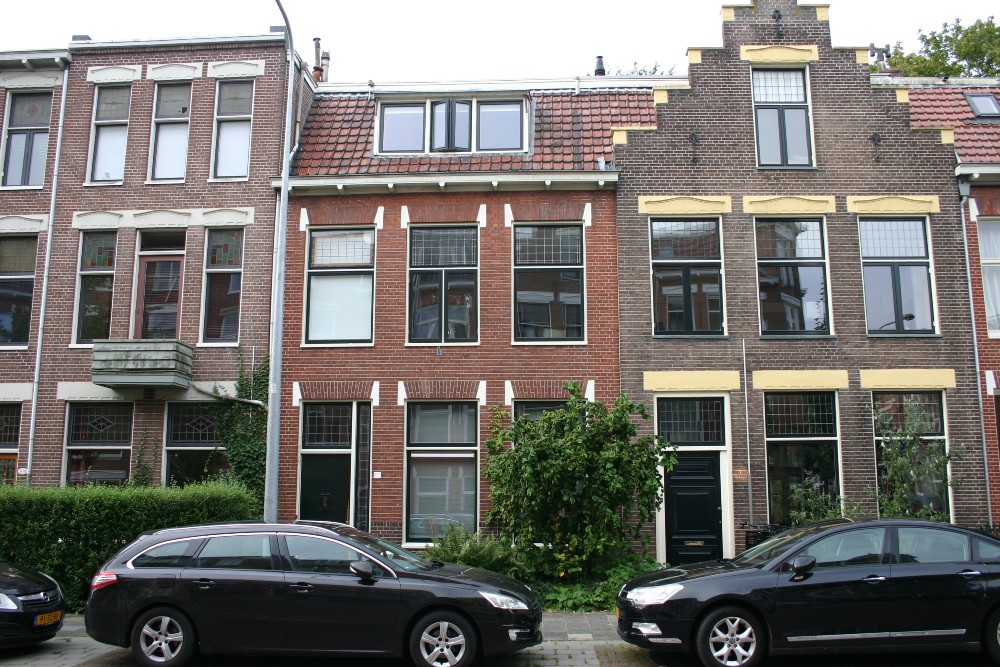Stumbling Stone Herman Colleniusstraat 52
This small, brass, memorial plaque (Stolperstein, struikelsteen, or stumbling stone) commemorates:
* Pieter Berend Venema, born 1897, resistance fighter, arrested 22 September 1944, Scholtenhuis, executed 25 September 1944, Westerbork.
Background
Pieter Venema was a car parts wholesaler. He and Johanna Adriana Steenmeijer married and had 3 children. He was a reserve officer in the Dutch army. He then joined the Ordedienst (OD), the largest Dutch anti-German resistance group at the beginning of the war. OD began with acts of sabotage but, after losing many members, shifted to helping people in hiding. Pieter Venema also worked for the National Support Fund (Nationaal Steunfonds), which provided financial support for individuals and for resistance efforts, including the 1944 railway strike.
Pieter Venema was betrayed and arrested on 22 September 1944 and taken to the Scholtenhuis, where the Gestapo were stationed and where they tortured and killed deserters and Dutch resistance fighters. He was executed 3 days later. He was 47. His wife and children were then evicted from their home; they were able to return only after Groningen was liberated in April 1945.
"Stolpersteine" is an art project for Europe by Gunter Demnig to commemorate victims of National Socialism (Nazism). Stolpersteine (stumbling stones) are small, 10x10cm brass plaques placed in the pavement in front of the last voluntary residence of (mostly Jewish) victims who were murdered by the Nazis. Each plaque is engraved victim’s with the name, year of birth, and place (mostly a concentration camp) and date of death. By doing this, Gunter Demnig gives an individual memorial to each victim. One stone, one name, one person. He cites the Talmud: "A human being is forgotten only when his or her name is forgotten."
Do you have more information about this location? Inform us!
Source
- Text: Bert Deelman & Anne Palmer
- Photos: Bert Deelman
- NIOD
- Stichting Stolpersteine Schilderswijk Groningen: Biografie Pieter Berend Venema
- Second Wiki: Scholtenhuis
- Stolpersteine.eu
Nearby
Point of interest
- Shell Impact Water Tower Groningen - Groningen
- Bullet Impacts Water Tower - Groningen
- Remembrance place Taco Mesdagplein 13 - Groningen
Monument
- War Monument Schilderswijk - Groningen
- Memorial Post Office Groningen - Groningen
- Memorial Groningen District Court - Groningen
Cemetery
- Dutch War Graves Northern Cemetery - Groningen
- Commonwealth War Graves Groningen - Groningen
- Dutch War Graves Zuiderbegraafplaats - Groningen
Remembrance Stone
- Stumbling Stone Herman Colleniusstraat 58 - Groningen
- Stumbling Stones Herman Colleniusstraat 25 - Groningen
- Stumbling Stone Wassenberghstraat 29 - Groningen
Fortification
- German Shelter Suikerunie Factory - Groningen
- German Tobruk Bunker Suikerunie Factory - Groningen
- German Bunker Haren - Haren





